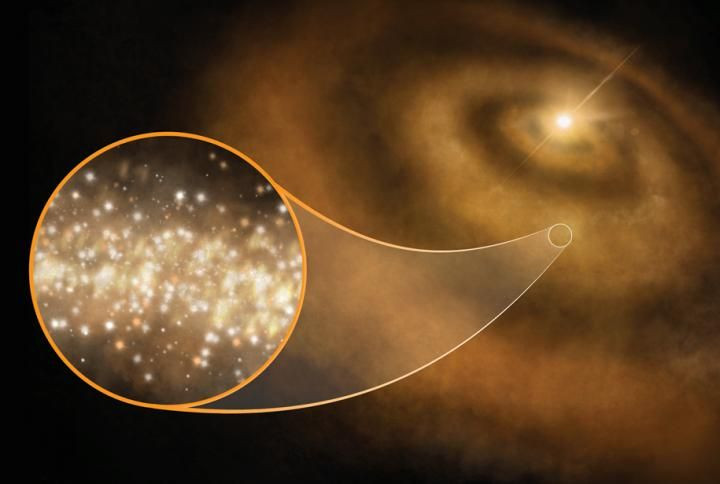Cosmic Diamond Particles Causing Mysterious Milky Way 'Glow'

An international team, led by researchers from Cardiff University, has solved a decades-old cosmic mystery, one due to which sky-gazers witnessed a mysterious glow in distant regions of our galaxy.
Ever since the faint glow was first detected 20 years ago, scientists have posited multiple theories to explain how the peculiar stream of microwaves, known as anomalous microwave emission or AME, is formed. Everybody knew that some kind of particle was responsible for the light, but nobody could delve into the details of the mysterious source.
But now, all of that changes with the latest work which rules out all possible theories, except one — rapidly spinning crystals of carbon or nanodiamonds that are too small to be detected by ordinary telescopes.
According to the team, these tiny nanodiamonds are residing in clouds of gas and dust or the so-called protoplanetary disks around newly born stars and giving the glow from there. The extremely hot and energy-rich conditions prevailing in these disks support the formation of planets and are also ideal for the natural formation of the nanoparticles. The material has even been seen meteorites striking the surface of Earth.
"In a Sherlock Holmes-like method of eliminating all other causes, we can confidently say the best and likely only candidate capable of producing this microwaves glow is the presences of nanodiamonds around these newly formed stars," Jane Greaves, the lead author of the study, said in a statement.
The group came to theory conclusion after taking a close look at the light from three separate but clear sources of AME, regions of gas and dust around young stars called V892 Tau, HD 97048, and MWC 297. The first of its kind observation, conducted with Green Bank Telescope (GBT) in West Virginia and the Australia Telescope Compact Array (ATCA), helped them match the features of light from these regions with the unique infrared spectral signature given off by the hydrogenated nanodiamonds or carbon crystals with hydrogen-bearing molecules on their surface.
Till date, many thought that a class of carbon-based molecules recognized by their distinct, faint infrared light could be the cause of this emission, but the sky-survey has bolstered the case of nanodiamonds. This is because many protoplanetary disks in our galaxy have clear signatures of the molecules, dubbed polycyclic aromatic hydrocarbons (PAHs), but they all do not appear to be associated with anomalous microwave emission. In this case, however, out of 14 stars, only these three appeared to be linked to both AMEs and nanodiamonds.
That said, it is worth noting that this is the first direct connection found between nanodiamonds and the mysterious microwave glow. Statistical models have suggested that these particles are abundant in regions around young stars, with many astronomers thinking that they are made up of one to two percent of the total carbon present in protoplanetary disks. "This is a cool and unexpected resolution to the puzzle of anomalous microwave radiation," concluded Greaves. "It's even more interesting that it was obtained by looking at protoplanetary disks, shedding light on the chemical features of early solar systems, including our own."
The study titled, "Anomalous microwave emission from spinning nanodiamonds around stars," was published June 11 in the journal Nature Astronomy.
© Copyright IBTimes 2024. All rights reserved.





















